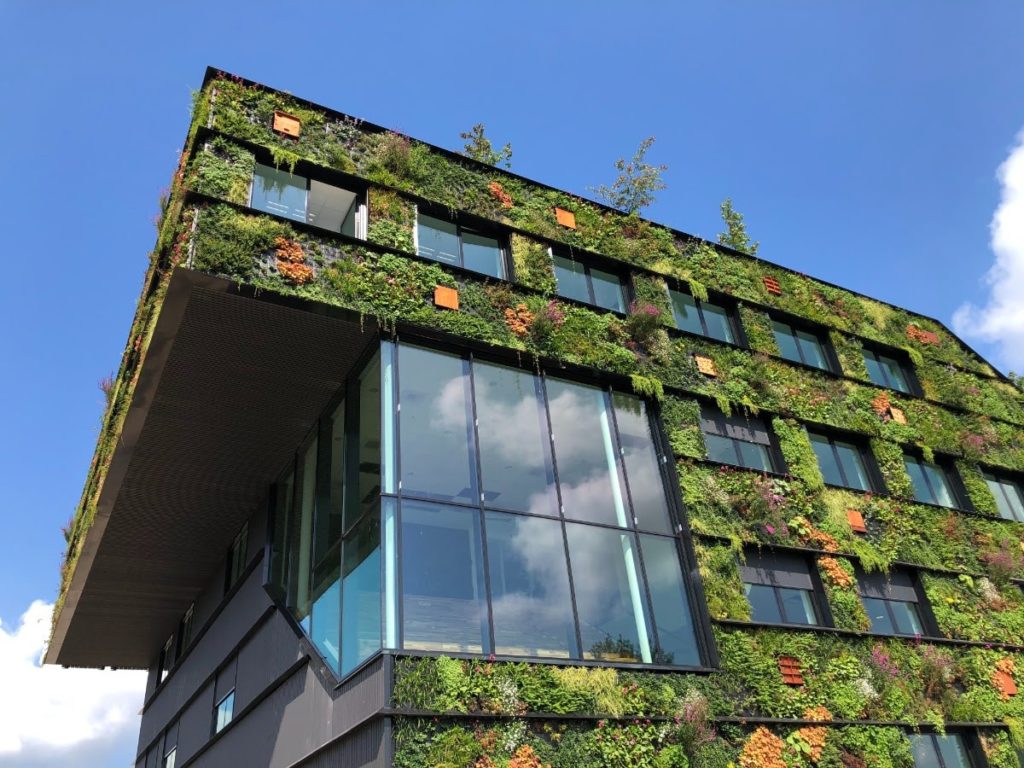News - Construction News
How can the construction industry contribute towards a Net Zero future?

Reports from the CCC (Climate Change Committee) that the UK’s sustainability programmes are falling short on Net-Zero targets is worrying news. It’s clear that all major industries need to do more – particularly construction, which accounts for 40% of all global CO2 emissions.
So, how can the construction industry achieve lower carbon outcomes and minimise its impact on the environment? Part of the solution lies in increased digital adoption and data says Lee Jones, Head of Manufacturing Solutions at NBS and Acting Head of Sustainability at Byggfakta Group.

Lee Jones
The big picture
In order to make improvements, we must first get a ‘lay of the land’ in terms of sustainability performance. Unfortunately, the construction industry isn’t performing at the level it should be. Despite an ongoing focus, new research has shown that green achievements have appeared to have gone backwards in the past decade. NBS’ Sustainable Futures Report found that just one in three construction professionals are hitting low carbon targets on their projects, whereas ten years ago it was around half.
It’s also clear that reporting on sustainability metrics needs marked improvements. The study found that a fifth of construction professionals are still not tracking or measuring sustainability and just one in twenty had worked on Net-Zero projects in the past year. Given that there are important targets to reach within the next eight years, it’s clear that a more robust approach is needed to sustainability goal-setting if it’s to stand a chance.
Start with sustainability
One way to improve the situation is to place sustainability as early in the construction journey as possible. According to the Treasury and Green Construction Board, embodied carbon has the most potential to be reduced at the design and planning phases, more so than at any other point. Yet in order to deliver this, architects and specifiers must have access to digitally-supplied product information. With access to data relating to the performance and carbon footprint of products – building designers can compare and contrast to ensure the final build is as green and clean as possible.
This type of data also plays an important role in calculating the amount of embodied carbon within a structure – allowing for a more accurate estimation of its overall carbon footprint.
Traceable, trackable
Digital data is also key to achieving the ‘Golden Thread of Information’. One of the major learnings from the Building a Safer Future Report, that the industry should provide a traceable, trackable record of materials and products in order to improve operational transparency. Having access to detailed datasets is crucial to building this breadcrumb trail of decision making – understanding what materials were used, at what point and who was responsible. Similarly, to building safety, for product manufacturers, specifiers are also demanding up-to-the-minute data on the green credentials of their products – supplying it in a format that allows them to work quickly, with greater accuracy and improved focus on both safety and sustainability.
Barriers to progress
Other barriers to sustainability success also exist. NBS’ Sustainable Futures Report found that for over half of respondents (52%), a lack of client demand was the most common cause – just 1% more than the cost of achieving sustainability (51%). Another concern was the view that sustainable products are being ‘value engineered’ out (38%), suggesting that a short-term focus remains with the upfront cost being considered above the lifetime value.
37% also stated that lack of government policy and regulation was another reason for a lack of take up of sustainable practices – more Government intervention is needed to legislate and deliver change.
Moving forward
What’s clear is that although client demand may be lacking, a more fervent push is needed on behalf of construction professionals to highlight the importance of sustainability. By doing so, we can create a more open dialogue that may lead to further recommendations and ultimately lower carbon outcomes.
Equally, perceptions relating to cost must also change, built environment professionals must take into the account the cost of the entire lifecycle of the building and not just initial construction – however, it will be no easy feat given that contractors are feeling pinch of rising building costs. In considering sustainability from the off, much of the perceived higher cost can be designed out.
With almost daily updates in the media around how our world is changing, construction needs to do more. Time is of the essence and as we reach the tipping point, we must now turn to tried and tested solutions – placing digital adoption and product information data at the heart of our sustainability strategy for the immediate future and beyond.
If you would like to read more stories like this, then please click here
Related Articles
More News
- New £39Bn Social and Affordable Homes Programme
14 Jul 25
Hundreds of thousands of social and affordable homes, including 60% for social rent.
- UK Introduces New Trade Measures to Support Steel Sector
11 Jul 25
Steel producers across the UK will benefit from stronger trade measures from 1 July.
- Clean energy future to be ‘built in Britain’
10 Jul 25
The Clean Energy Industries Sector Plan comes into force to ‘build it in Britain’.






